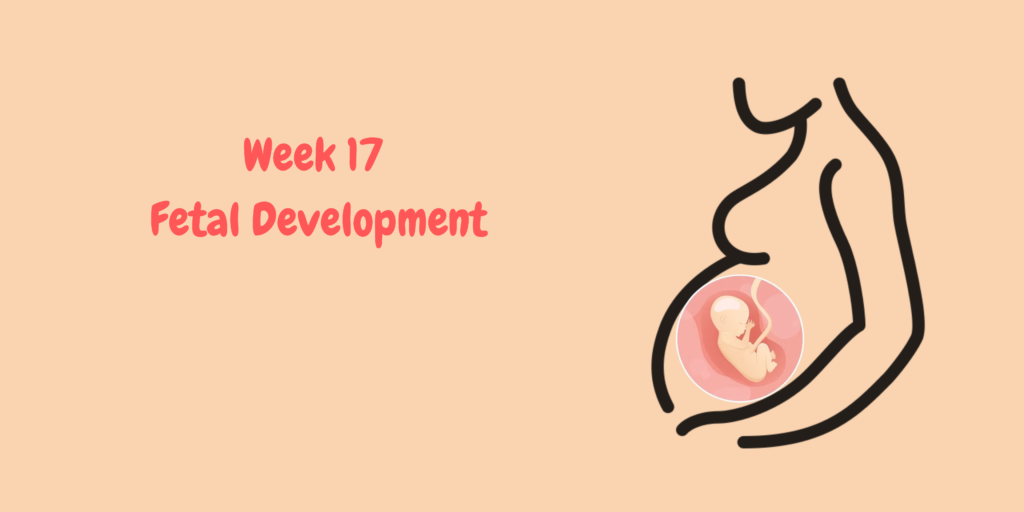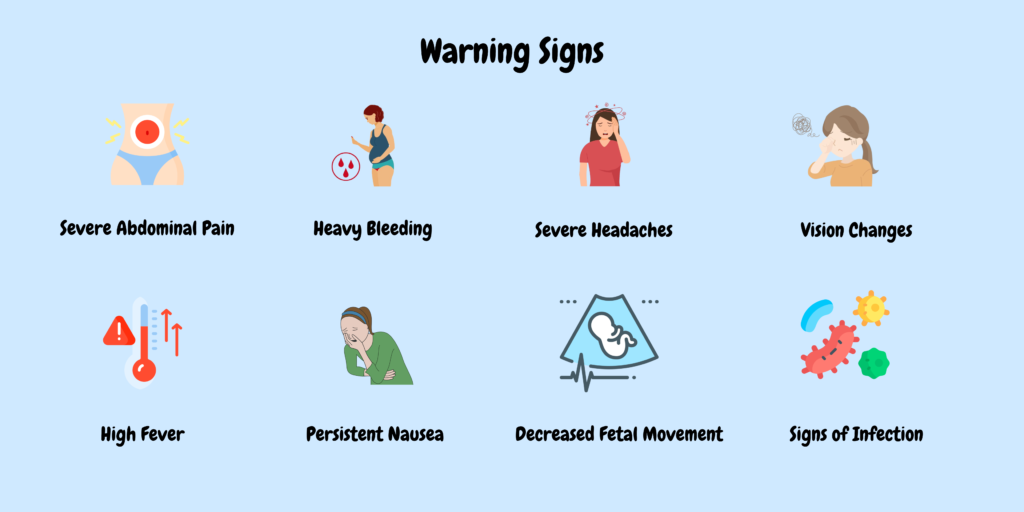4th Month of Pregnancy (14-17 weeks)

Congratulations, you have officially made it to the Second Trimester. During the fourth month of pregnancy (14 to 17 weeks), many women start to feel more energized as the early symptoms of nausea and fatigue begin to calm down. This is a significant time for fetal development, as the baby’s organs continue to mature and features like fingers, toes, and facial characteristics become more defined.
The risk of miscarriage decreases, leading to a greater sense of reassurance for many expectant mothers. Physical changes become more noticeable; the abdomen may start to round as the uterus expands. Hormonal fluctuations can still cause mood swings, but overall, this month often marks a shift toward a more comfortable and exciting phase of pregnancy. Regular check-ups become important to monitor the baby’s growth and health.
On this page
1. Common Pregnancy Symptoms at 4th Month Pregnant
During the fourth month of pregnancy, women may experience a variety of common symptoms, including:
- Increased Energy: Many women start to feel more energetic as early fatigue fades.
- Reduced Nausea: Morning sickness often diminishes during this stage.
- Growing Belly: The abdomen begins to round as the uterus expands.
- Skin Changes: Some women notice changes in skin pigmentation, such as the “mask of pregnancy”.
- Increased Urination: As the uterus grows, it may press on the bladder, leading to more frequent trips to the bathroom.
- Back and Joint Pain: As the body adjusts to the growing baby, back and joint discomfort can occur.
- Constipation: Hormonal changes can slow down digestion, leading to constipation.
- Heartburn: As the uterus expands, it may press against the stomach, causing acid reflux or heartburn.
- Increased Vaginal Discharge: Many women notice a thicker, milky discharge as hormonal levels change.
- Nasal Congestion: Hormonal changes can lead to swelling in the nasal passages, causing congestion or a stuffy nose.
- Dizziness or Lightheadedness: This can be caused by changes in blood flow or low blood sugar.
- Leg Cramps: Some women experience cramping in the legs, particularly at night.
- Swelling: Mild swelling in the feet and ankles can start as fluid retention increases.
- Varicose Veins: Hormonal changes and increased blood volume can lead to varicose veins in some women.
- Frequent Headaches: Hormonal fluctuations can trigger headaches for some.
These symptoms can vary from person to person. If any symptoms cause concern, it’s always best to consult with a healthcare provider.
2. Fetal Development

At four months pregnant, significant fetal development occurs:
- Organ Development: Major organs continue to mature. The heart is fully formed and pumping blood efficiently, and the digestive system begins to develop further.
- Movement: While the mother may not feel it yet, the fetus is becoming more active, moving around and practicing movements like kicking and stretching.
- Facial Features: The face becomes more defined, with eyes moving closer together, ears positioning on the sides of the head, and the formation of the nose and mouth.
- Limbs: The arms and legs are growing longer and developing fine motor skills, with fingers and toes becoming more distinct.
- Skin and Hair: The skin is thin and translucent, and fine hair called lanugo begins to cover the body for warmth.
- Sexual Differentiation: By this stage, the baby’s sex can often be determined through ultrasound, as the genitalia are developing.
- Reflexes: The fetus begins to develop reflexes, such as sucking and swallowing, and can respond to stimuli.
This month marks a critical period of growth and development.
3. Baby Bump
At four months pregnant, many women begin to notice a distinct baby bump as the uterus expands and rises above the pelvic bone. The bump is usually more prominent for those who have been pregnant before, while first-time mothers may still have a subtle change in their abdomen.
At this stage, the bump can vary widely in size and shape depending on factors like body type, weight gain, and muscle tone. The baby bump often has a rounded appearance, and the skin may feel stretched. This month is also a time when some women start to embrace their changing bodies, as the pregnancy becomes more visible and tangible. It’s a wonderful milestone that often brings excitement for the journey ahead.
4. Size and Weight of Baby
At four months pregnant, typically around weeks 14 to 17, the baby is about 4 to 5 inches long, roughly the size of an avocado. The weight is around 3 to 5 ounces. This is a significant growth period as the baby continues to develop rapidly, with noticeable changes in size and features occurring week by week. The head is still relatively large compared to the body, and the limbs are becoming more proportionate as the fetus develops further.
5. Prenatal Vitamins
At four months pregnant, taking prenatal vitamins remains crucial for the health of both the mother and the developing baby. Key components include:
- Iron: Supports increased blood volume and helps prevent anemia, typically around 27 milligrams is recommended.
- Calcium: Vital for the development of the baby’s bones and teeth; around 1,000 milligrams per day is advised.
- Vitamin D: Supports calcium absorption and overall health, usually around 600 international units is recommended.
- Iodine: Essential for thyroid function and brain development, with a typical recommendation of 220 micrograms daily.
6. Checklist for when you’re 4 months pregnant
Here’s a helpful checklist for when you’re four months pregnant.
- Continue Prenatal Vitamins: Ensure you’re taking your prenatal vitamins daily.
- Schedule Check-Ups: Keep up with regular prenatal appointments and discuss any concerns with your healthcare provider.
- Monitor Symptoms: Keep track of any new or unusual symptoms and report them to your doctor.
- Balanced Diet: Focus on a well-rounded diet rich in fruits, vegetables, whole grains, lean proteins, and dairy.
- Stay Hydrated: Drink plenty of water throughout the day.
- Limit Caffeine and Sugar: Reduce intake of caffeine and sugary foods to maintain energy levels and overall health.
- Stay Active: Engage in safe, moderate exercise (like walking or swimming) as advised by your healthcare provider.
- Research Birth Classes: Consider enrolling in prenatal or childbirth education classes.
- Start Baby Planning: Begin thinking about baby names and nursery ideas.
- Read Up on Parenting: Explore books or resources about newborn care and parenting.
- Practice Self-Care: Make time for relaxation and activities that bring you joy.
- Talk About Feelings: Share your thoughts and feelings with a partner, friend, or therapist as needed.
- Check Insurance: Review your health insurance coverage for prenatal care and delivery.
- Share the News: If you haven’t already, this may be a good time to share your pregnancy news with friends and family.
- Create a Baby Registry: Start a list of baby essentials you’ll need for after the birth.
Following this checklist can help you stay organized and prepared as you move through your pregnancy.
7. When to see a Doctor
During the fourth month of pregnancy, it’s important to keep regular appointments with your healthcare provider. However, you should seek medical attention if you experience any of the following:

- Severe Abdominal Pain: Any sharp or persistent pain that feels unusual or concerning.
- Heavy Bleeding: Spotting is common, but heavy bleeding may indicate a problem.
- Severe Headaches: Intense headaches that don’t respond to over-the-counter pain relief.
- Vision Changes: Blurred vision, seeing spots, or sudden changes in eyesight.
- Swelling: Sudden swelling of the hands, feet, or face could signal preeclampsia.
- High Fever: A fever above 4°F (38°C) that doesn’t go down with medication.
- Persistent Nausea or Vomiting: If nausea returns severely or you can’t keep food down.
- Decreased Fetal Movement: While movement may not be felt until later, any concerns about the baby’s activity should be discussed.
- Signs of Infection: Such as painful urination, persistent back pain, or unusual discharge.

